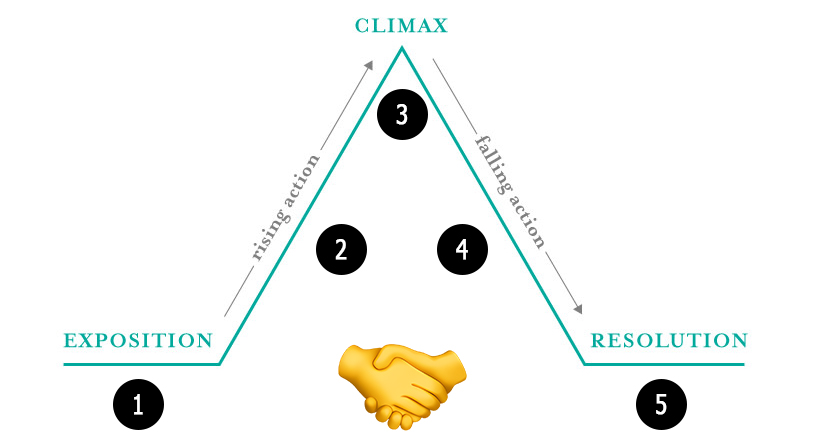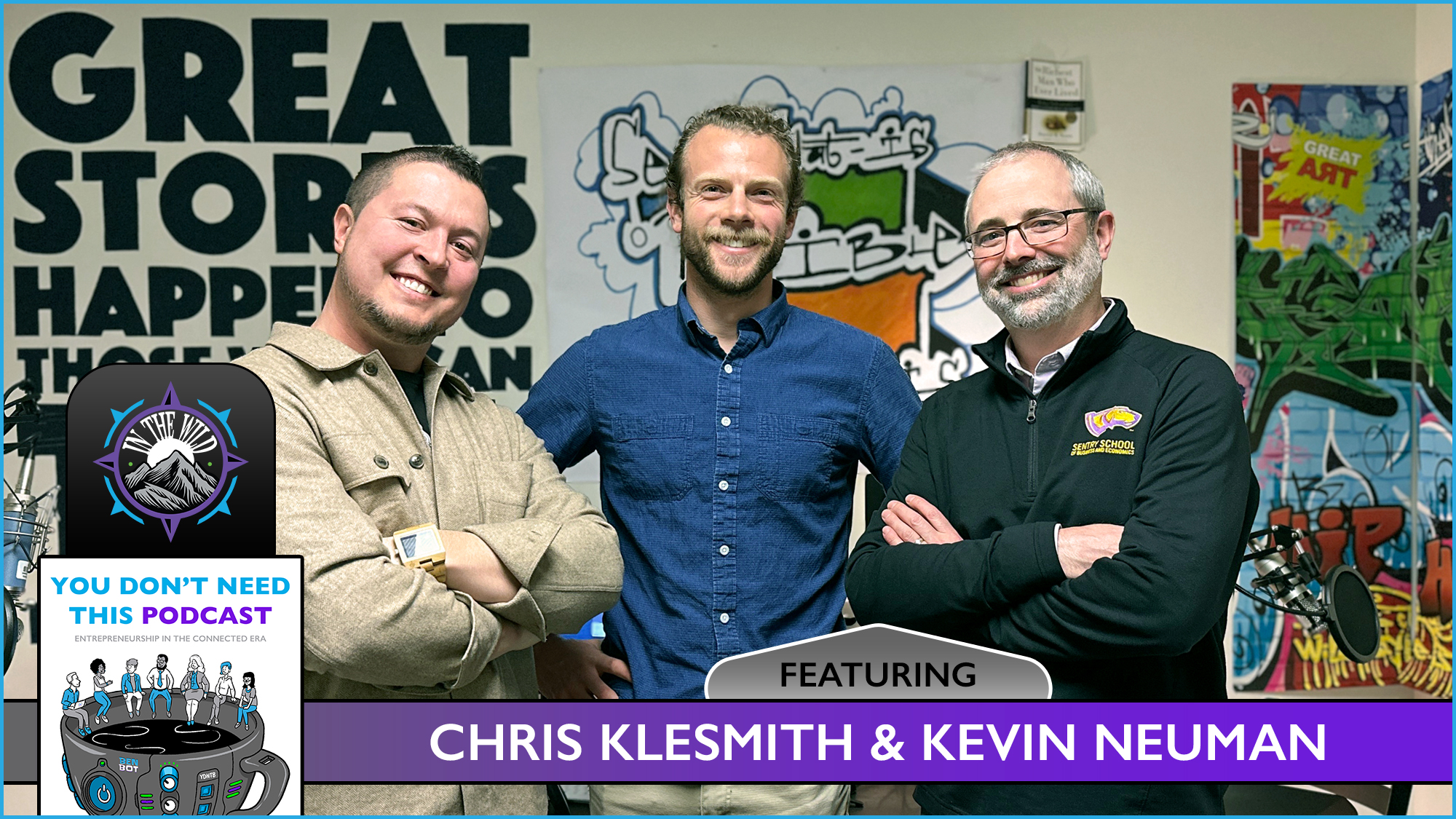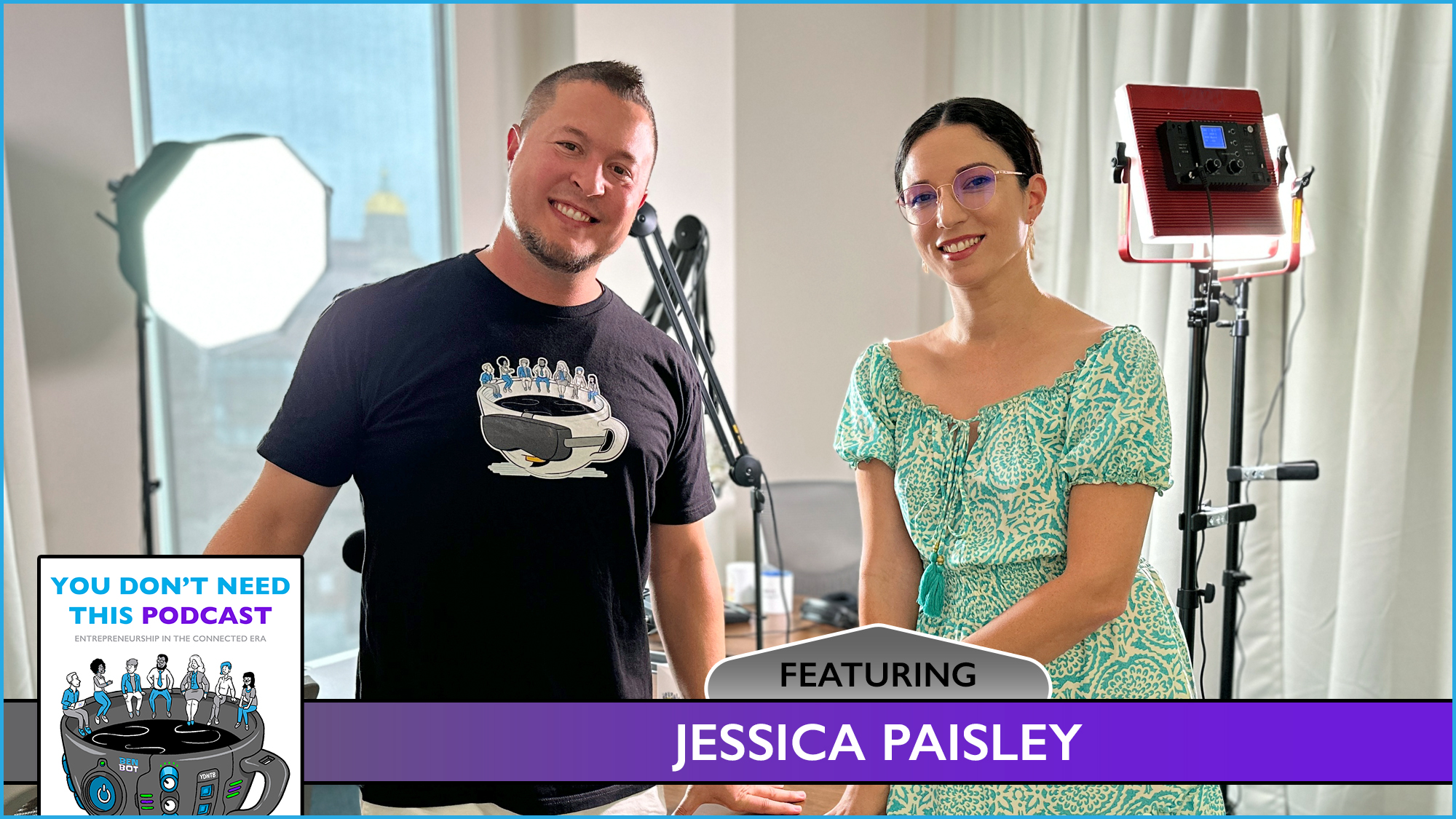Early in my career, leaving a networking event with a pocket full of business cards felt like a success. After collecting piles of business cards, why did these relics from past interactions feel more like rubble? I learned it was because they were more proof of a transaction, than a signal of true connection. That changed as I stopped trying to be interesting and instead, became interested.
Extra Shot
“You can make more friends in two months by becoming interested in other people than you can in two years by trying to get other people interested in you.” -Dale Carnegie
When meeting people, it doesn’t matter what I’m working on, what I’ve done, or how interesting I appear to be. A first encounter is about focusing on who I’m with. It’s about making mental links between them and others I enjoy connecting. It’s about conjuring inverse charisma, leaning into playforce principles, and genuine storytelling. Along this path of being interested, deeper conversations have sparked emotion in more first encounters.
These emotions strengthen your memory, which makes it easier to stay in tune, even as your network expands. In fact, the brain is neurologically programmed to remember experiences that evoke emotion. These experiences are easier to remember because they activate the amygdala and hippocampus simultaneously. The emotion-focused amygdala increases the hippocampus’ ability to store memories. This means the stronger emotion(s) you have, the stronger your memory will be of that experience. If your first conversation with someone sparks emotion, your memory of meeting them will be improved.
For me, excitement is usually the emotion I feel in a first conversation. As I learn about who I’m meeting, the opportunity to connect them is fascinating. Excitement helps me store the memory of who I’m meeting while connecting stored memories of others I’ve met. The emotions that come with being interested vs. interesting, makes each experience more memorable and suddenly, no business cards are required.
Extra Shot
This caffeinated contribution was written by Nick O’Brien. Nick is a community builder, engagement strategist, and co-founder of Milwaukee Founders Community. His purpose in life is to connect people to people, people to place, and people to potential.
Even as we get interested in connected dots, it can be hard to avoid the common tendencies of others, which can decrease the likelihood of true connection. After years of intentionally observing the ways people approach meeting someone new, I’ve noticed a few trends based on different types of people. Introverts are more careful with what they say. They’ll share experiences, perspectives, and opinions, but typically not without being asked. Extroverts are more likely to stand out, as they share their experiences, perspectives, and ideas more openly. While there’s a complex conversation required to further understand extraversion, introversion, and ambiversion, let’s zoom in on how introverts and extroverts encounter those first moments of impact.
When two introverts meet, they typically stay on the surface. The hidden intent here is to not stand out, especially if what they say or do is going to make them seem less interesting. While this reserved approach to a first interaction might lead to an easy, free-flowing conversation, it’s not conducive to getting below the surface where unique experiences, perspectives, and insights can be exchanged. This play-it-safe approach actually decreases the chances they’ll remember each other, because very little emotion was initiated.
As two extroverts exchange a first impression, they both dive right in. With an intent of being interesting to the other person, they soon begin to subtly one-up each other to earn attention. Both extroverts may be energized, but the emotions of this memory are built on comparisons to the other person. Instead of potential progress between peers who feel intrigued by what’s possible, confident people are left dwelling on their own shortcomings.
When introverts and extroverts cross paths, it’s natural for an extrovert to dominate the conversation. Unsurprisingly, both personality types are typically comfortable during these interactions. The introvert feels good because they are less worried about standing out when all they have to do is listen to what the extrovert is saying. The extrovert shares a lot about what makes them interesting, which makes them feel comfortable too. As a result the introvert learns a lot about the extrovert, but true connection is a two-way street. Without the extrovert learning about the introvert, the exchange was transactional. The introvert may have experienced emotion to help them remember the extrovert, but it’s unlikely that the extrovert feels much connection when they did all the talking.
No matter the environment, when you want to meet new people, it’s about maintaining an interest in perpetual learning. With practice, you’ll become more knowledgeable and better at recalling what you know about who you know.
What you know about who you know can become a super power when it comes to making introductions. A good introduction can be boiled down to a compelling story that includes 5 elements – exposition, rising action, climax, falling action, and resolution. The goal is for the introduction to be concise, aligned, and engaging enough to not only have sticking power, but also generate immediate action as a result of the conversations you help curate.

- Exposition – Name the Story
Simple and important. The name of who you’re introducing becomes the title of this story and creates a new mental folder for the information you’re about to share. Many struggle to remember names, which correlates with why we struggle to remember what we’ve learned about people. As you evoke emotion with your introductions, you’ll find yourself remembering the names and related details of more people. One common go-to are the emotions of having fun. People do business with people they like and most people like to have fun. Including a fun fact about people is an easy way to support memorable introductions while strengthening your memory of those you’re introducing.
- Rising Action – Build a Connection
Be quick to explain why they’ll want to keep listening. This is when you briefly explain how people spend their time and/or what they care about. Remember, what someone consistently cares about is rarely found in a company logo or professional title. As you evoke intrigue in this rising action, customize the story with knowledge of the audience and attempt to align both parties with shared potential. By personalizing introductions, we increase the enjoyment of each interaction and welcome more emotional variety that deepens the memory. Another trick that adds early trust layers, is to mention someone else both parties respect, who may find this intro especially interesting.
- Climax – Share in Celebration
Now’s the time to celebrate! This takes the initial connection to the next level by inviting awareness around a recent milestone for the person you’re introducing. Ideally, the milestone is related to something you’ve already shared about the person, and is also something the audience is familiar with. This can be tricky if you don’t know people well, but get creative with small wins to always have this option. Large or small, professional or personal, a shared celebration prompts complimentary emotions. If possible, highlight a milestone that others have also experienced themselves, which can add even more collective emotion.
- Falling Action – Align our Focus
After sharing a name, why this introduction is interesting, and sharing a moment of celebration, your audience is eager to learn how else they can engage. You’ve just highlighted someone’s win, which creates room to shift the shared focus toward what may be next. This is often a milestone someone is trying to reach, an obstacle they are trying to overcome, or a current project they’re passionate about. If you don’t know much about who you’re introducing, pick something less specific and more general based on the environment. The quick ideas you weave in here are all about inviting feedback, experiential wisdom, and interesting insights into the conversation.
- Resolution – Invite fresh Action
The stars of this story feel less pressure to act interesting, because you’ve done it for them. Now finish your 15-20 second story and encourage a longer sequel! To do this, mention (types of) people who may be able to connect more dots. Ideally, someone who the other person can easily make an introduction to. Either way, like with the previous elements of this introduction, it doesn’t matter who you list as potential connections. If the suggestions are genuine, a sense of being in the right place at the right time, inspires emotions that come with action.
That’s it! We’ve set the stage for a memorable, emotion-based conversation by including relevant information that makes any personality type feel significance. This introduces equitable, level-setting hooks for a conversation to flourish without you as a constant conduit between them. When the beauty of this method sets a virtuous tone between the people you introduced, be quick to graduate gracefully from the group. This selflessness is rewarded as connectors become connected and more people are invited to lead together.
As these unique interactions are personified by emotion, mutual memories lay a foundation for true connection. When true connections show up, follow up, and keep adding diversity through a positive-sum mindset, the exponential value of a community can be realized.




